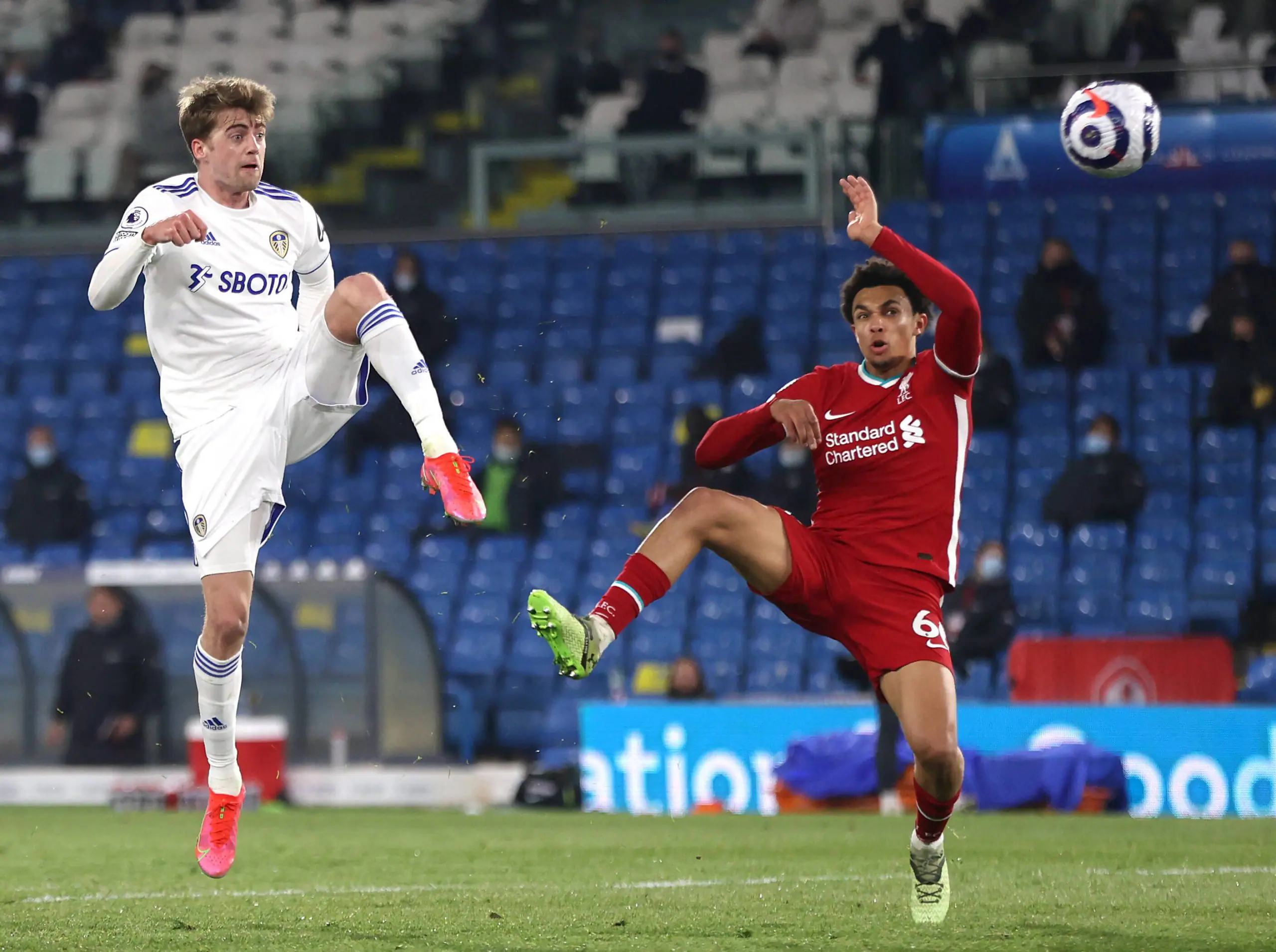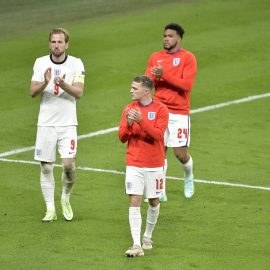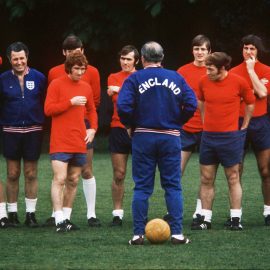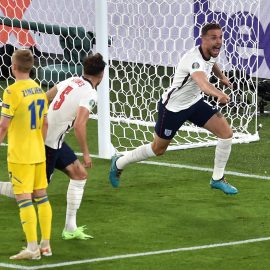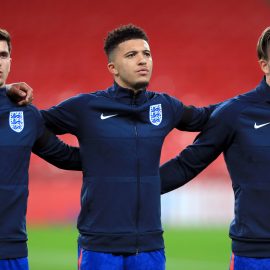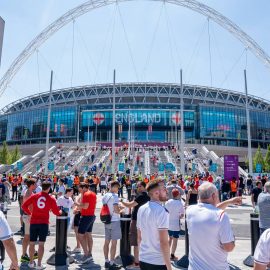On Monday came news that Raheem Sterling, Jake Livermore and Adam Lallana had been called into the England squad ahead of Tuesday night’s encounter with Ukraine.
As usual with England, like a cross country run at school, there were an unusually high amount of absences from the squad. Theo Walcott has had to go back to Arsenal due to some sort of virus, Daniel Sturridge was suffering from stomach cramps in training (but should be fit for Tuesday’s match) while John Terry, Adam Johnson and Ashley Cole pulled out before England’s trip to hopeless Moldova. Wayne Rooney and Andy Carroll are longer-term absences.
These injuries, illnesses with perhaps a sickie or two thrown in have led to these three young bucks being called up for England duty. The selection of these youngsters hasn’t met with much praise so far, with most people choosing to focus on the players’ lack of experience rather than the potential that these players have.
This is typical of English thinking. Looking at the drawbacks of a player first before looking at the positives. Looking at why these players won’t work out at international level rather than why they will. This isn’t to say the media shouldn’t on occasion criticise selections, but they do tend to veer towards pessimism rather than optimism. It seems that in Britain the media and the majority of supporters want to instil a conservatism, a certain staidness into their players.
Well it’s this conservatism that holds back England. At major tournaments, England very rarely thrill, or excite, or play with any sort of gusto. They may vow to give it the clichéd 100% and to never give up, but in reality England tend to be a dull, functional side scared of making mistakes, perhaps due to past failures, lack of confidence and the immense pressure brought upon by fans and media.
Were England to break out of this mental rut, to play with verve, panache and a freedom of expression along with organisation and tactical intelligence, then we might see England start to have some success. They may even be able to keep possession for more than 30 seconds.
This is not to say England should suddenly become a gung-ho, attacking side. At international level, champion sides rarely play offensive football. Spain for example are for the most part a conservative side, keeping possession to protect their defence as much as a means of attacking. But you don’t have to be tactically aggressive to play with confidence, cohesion and with a real sense of purpose. Germany for example are not enormously attacking, but they still play with flair and youthful exuberance.
It’s no coincidence that the players who have done for best for England at major tournaments have been young players who felt neither a suffocating fear of failure, nor were scared of the opposition. Paul Gascoigne in 1990 barely made the squad but then was probably England’s player of the tournament. Michael Owen in 1998 as a remarkably young looking 18 year old scored an iconic goal against Argentina, while Wayne Rooney in 2004 dazzled Europe with pace, dribbling, strength, a great eye for goal and a wonderful youthful effervescence.
That’s why picking Sterling, Lallana and Livermore for tomorrow’s match is I think a step in the right direction. Roy Hodgson has always been a cautious coach who focuses more on defence than attack. But as an international coach of renown, he must surely have recognised how important it was for England to blood younger players in time for the 2014 World Cup in Brazil.
At the Euros, for once England played with a sense of purpose and a clear way of playing. Unfortunately this way of playing consisted of playing defensively and having the defensive line so deep they were in danger of being in the stand rather than on the pitch.
This is not to blame Hodgson, who inherited a veteran squad simply not good enough in possession to play any sort of attacking game. And aside from the win against Sweden, when lax defending put England behind and forced them to go for it, it worked fairly well in taking a poor side to being only a penalty shoot-out away from the semi-finals.
But with two years to the next tournament, younger players have to come through. The midfield duo for example of Gerrard-Lampard that started against Moldova cannot be the midfield duo in two years’ time if England hope to achieve any sort of success.
Picking someone like Raheem Sterling is a positive step. Sterling may be only seventeen years old and only have played only five times for Liverpool. But he is young, extremely talented and in his appearances this season has been scaring the life out of opposition defenders. Bringing him into the England setup and giving him experience of both Hodgson’s coaching along with allowing him to mix with fellow internationals can only be a good thing.
The main argument against his selection appears to be his inexperience and the fact he will have to deal with ‘pressure’ playing for England. Well he’s 17 years old. He’s so young I doubt he feels much pressure. The way on the pitch he attacks defenders with pace, power and skill suggests a young player who is yet to feel the fear and pressure that in England turns talented young tyros into stilted international players.
As regards his age, I don’t see why it’s such an issue. If he’s good enough and talented enough then he should be picked. Brian Clough who picked 16 year old Stevie Powell for Derby in the 1972 First Division title decider once said being a manager was about picking the best eleven players on the pitch, not ‘the ability to read birth certificates’. Sterling may be fortunate to be picked ahead of the likes of Nathan Dyer, Scott Sinclair and Aaron Lennon but he has the most potential of those players and I highly doubt he’ll play anyway. Most likely Hodgson wants to give a gifted youngster a chance to experience international football off the pitch.
Besides, England are just starting a qualifying campaign where they should comfortably qualify for the 2014 World Cup. Gaining experience off the pitch and some experience on the pitch, probably against the likes of Moldova and San Marino, does not constitute pressure. Playing for Liverpool, an underperforming club desperate for young players to emerge and where at the moment everything goes (except winning league matches), is surely much more pressure than playing for England. And no one is saying he should never play for Liverpool because the pressure’s too big.
The other players Hodgson has brought in to add depth to the squad are more experienced than Sterling but are slightly perplexing selections. Adam Lallana is a talented player who’s been excellent for Southampton in their rise from being mid-table in League One to being in the Premiership in a season and a half. But he’s twenty four years old and has been chosen ahead of Dyer, Sinclair and Lennon, players of similar age and who are more highly touted. Lennon especially must feel hard done by to have Lallana picked ahead of him.
Jake Livermore is perhaps the most puzzling one of the lot. Livermore’s a solid player, decent in possession and a fairly good tackler. But he is a limited player who lacks imagination passing the ball, neglecting forward passes to pass sideways (not always accurately either). More progressive midfielders, like Jordan Henderson or even Jonjo Shelvey at Liverpool will feel that they were unlucky not to have been picked.
Still, it’s very good for England’s future prospects that Hodgson is giving youth a chance. Picking Gerrard and Lampard against Moldova raised fears that largely the same England side that failed at Euro 2012, failed at the 2010 World Cup and failed before that would fail again in 2014. Now selecting youngsters to add depth to his squad is hopefully a sign that Hodgson realises the need for youth and the need for a number of England’s current starters to be replaced by the time the next World Cup comes round.
Add Sportslens to your Google News Feed!
